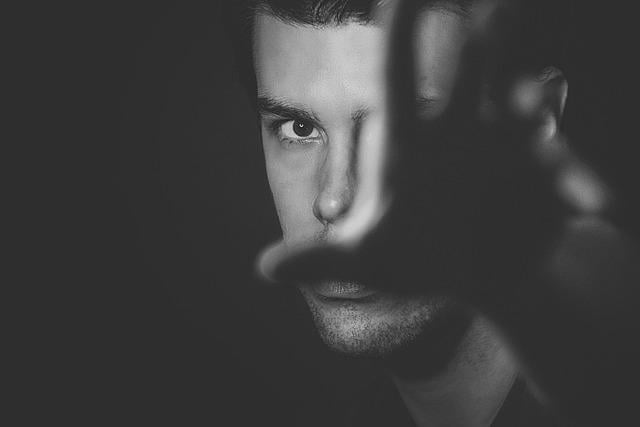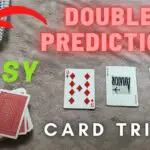
In this post, we will look at what mentalism is and the history of mentalism, as well as some mentalism tricks, how it is different from magic, and what some great mentalism books are that you can read to learn mentalism.
For an in-depth guide to mentalism, see the Free Mentalism Guide on this site. You may also want to visit How to Learn Mentalism for a look at learning mentalism.
What is Mentalism?
Mentalism is a type of entertainment that involves the performer demonstrating seemingly supernatural mental abilities, such as telepathy, mind reading, and precognition. Mentalists typically use a combination of psychological techniques, such as cold reading and hypnosis, and showmanship to create the illusion of having paranormal powers.
Mentalism originated in the 19th century, when stage performers would claim to be able to communicate with the dead or predict the future. In the 20th century, mentalists began to focus more on the psychological aspects of their performances, using techniques such as cold reading and suggestion to create the illusion of having psychic abilities.
Today, mentalism is a popular form of entertainment, with many mentalists performing on stage and television. Mentalists are known for their ability to amaze and baffle audiences with their seemingly supernatural abilities, and their performances often involve interacting with audience members and using props such as cards, coins, and numbers to create the illusion of psychic powers.
While mentalism is primarily seen as a form of entertainment, some mentalists also use their skills in other areas, such as psychology and therapy. For example, some mentalists use their abilities to help people overcome phobias or anxiety, or to improve their confidence and self-esteem.
Overall, mentalism is a fascinating and intriguing form of entertainment that continues to captivate audiences with its seemingly supernatural abilities.
The History of Mentalism
The history of mentalism can be traced back to the 19th century, when stage performers would claim to have supernatural abilities, such as the ability to communicate with the dead or predict the future. These performers would often use a combination of showmanship and deception to create the illusion of having paranormal powers.
In the early 20th century, mentalism began to evolve, with performers focusing more on the psychological aspects of their performances. This involved using techniques such as cold reading and hypnosis to create the illusion of having psychic abilities. Cold reading involves gathering information about an audience member and using subtle cues and body language to create the impression of having special knowledge about them. Hypnosis involves using suggestion and suggestion to alter an individual’s state of consciousness.
During this time, mentalism also became more popular, with many mentalists performing on stage and television. Some of the most famous mentalists of this era included Dunninger, the Amazing Kreskin, and Max Maven. These performers were known for their ability to amaze and baffle audiences with their seemingly supernatural abilities.
In the 21st century, mentalism continues to be a popular form of entertainment, with many mentalists performing on stage and television. While mentalism is primarily seen as a form of entertainment, some mentalists also use their skills in other areas, such as psychology and therapy.
Overall, the history of mentalism is a fascinating story of the evolution of this intriguing form of entertainment, from its roots in supernatural phenomena to its focus on psychological techniques and showmanship.
Mentalism Tricks
Mentalism tricks are techniques that mentalists use to create the illusion of having supernatural abilities, such as telepathy, mind reading, and precognition. Mentalists use a combination of psychological techniques, such as cold reading and hypnosis, and showmanship to create the illusion of having paranormal powers.
Some common mentalism tricks include:
- Cold reading: Cold reading involves gathering information about an audience member and using subtle cues and body language to create the impression of having special knowledge about them. For example, a mentalist might ask an audience member to think of a person’s name, and then use cues such as facial expressions and body language to guess the name.
- Hypnosis: Hypnosis involves using suggestion and suggestion to alter an individual’s state of consciousness. A mentalist might use hypnosis to make an audience member believe that they are seeing something that is not really there, or to make them do something that they would not normally do.
- Mentalism props: Mentalists often use props, such as cards, coins, and numbers, to create the illusion of having psychic abilities. For example, a mentalist might ask an audience member to choose a card from a deck, and then use their powers of mind reading to determine which card was chosen.
- Psychological techniques: Mentalists often use psychological techniques, such as NLP (neuro-linguistic programming) and body language reading, to create the impression of having psychic abilities. For example, a mentalist might use NLP to create the illusion of being able to read someone’s mind, or to make an audience member believe that they are seeing something that is not really there.
Overall, mentalism tricks are designed to amaze and baffle audiences, and to create the impression of having supernatural abilities. While many mentalists use these tricks to entertain audiences, some also use their skills in other areas, such as psychology and therapy.
Mentalism vs. Magic
Mentalism and magic are two forms of entertainment that are often confused with one another. While they have some similarities, they are also distinct in many ways.
Mentalism is a type of entertainment that involves the performer demonstrating seemingly supernatural mental abilities, such as telepathy, mind reading, and precognition. Mentalists typically use a combination of psychological techniques, such as cold reading and hypnosis, and showmanship to create the illusion of having paranormal powers.
Magic, on the other hand, involves the performer demonstrating seemingly supernatural physical abilities, such as levitation, teleportation, and making objects disappear. Magicians typically use a combination of sleight of hand and deception to create the illusion of having paranormal powers.
One key difference between mentalism and magic is the focus of the performance. Mentalism focuses on the performer’s mental abilities, while magic focuses on the performer’s physical abilities. Another key difference is the way in which the illusions are created. Mentalists use psychological techniques and showmanship to create the illusion of having psychic abilities, while magicians use sleight of hand and deception to create the illusion of having physical abilities. (You can learn about what sleight of hand is at What is Sleight of Hand?)
Despite these differences, mentalism and magic both aim to entertain audiences with seemingly supernatural abilities. Both forms of entertainment require a high level of skill and expertise, and both can be highly engaging and captivating for audiences.
Mentalism Books
Mentalism books are books that provide information and instruction on mentalism, which is a type of entertainment that involves the performer demonstrating seemingly supernatural mental abilities, such as telepathy, mind reading, and precognition. Mentalism books can be a valuable resource for anyone interested in learning more about mentalism, and can provide a wide range of information, from the history of mentalism to tips and tricks for performing mentalism tricks.
Some popular mentalism books include:
- “Mentalism for Dummies” by David Britland: This book is an introduction to mentalism for beginners, and covers the history of mentalism, the principles of mentalism, and how to perform mentalism tricks.
- “The Complete Idiot’s Guide to Mentalism” by Tom Ogden: This book is a comprehensive guide to mentalism, and covers everything from the history of mentalism to tips for performing mentalism tricks.
- “Mentalism: The Complete Guide” by James L. Clark: This book is a comprehensive guide to mentalism, and covers the principles of mentalism, the psychology of mentalism, and how to perform mentalism tricks.
- “The Art of Mentalism” by Richard Osterlind: This book is a comprehensive guide to mentalism, and covers the principles of mentalism, the psychology of mentalism, and how to perform mentalism tricks.
Mentalism books can be a valuable resource for anyone interested in learning more about mentalism, and can provide valuable information and instruction on how to perform mentalism tricks. Whether you are a beginner or an experienced mentalist, there is a mentalism book out there for you.
Is Mentalism Real?
Mentalism is a form of entertainment that involves the performer demonstrating seemingly supernatural mental abilities, such as telepathy, mind reading, and precognition. While mentalism may appear to be real, it is actually an illusion created through a combination of psychological techniques, such as cold reading and hypnosis, and showmanship.
In reality, mentalists do not have psychic abilities, and their performances are not real examples of telepathy, mind reading, or precognition. Instead, mentalists use psychological techniques and showmanship to create the impression of having supernatural abilities.
For example, a mentalist might use cold reading to gather information about an audience member and use subtle cues and body language to create the impression of having special knowledge about them. A mentalist might also use hypnosis to make an audience member believe that they are seeing something that is not really there, or to make them do something that they would not normally do.
Overall, while mentalism may appear to be real, it is actually an illusion created by skilled performers using psychological techniques and showmanship. Mentalists do not have psychic abilities, and their performances should not be taken as evidence of the existence of paranormal phenomena.
Who Are The Best Mentalists?
It is difficult to say who the best mentalists are, as opinions on this topic may vary depending on individual preferences and experiences. However, some mentalists are generally considered to be among the best in the field.
Some of the best mentalists include:
- Derren Brown: Derren Brown is a British mentalist and magician who is known for his mind-blowing performances and incredible skills. He is a master of psychological techniques and showmanship, and is known for his ability to amaze and baffle audiences with his seemingly supernatural abilities.
- David Blaine: David Blaine is an American magician and illusionist who is known for his incredible feats of endurance and mind-blowing magic tricks. He is a master of sleight of hand and deception, and is known for his ability to create the illusion of having supernatural abilities.
- Criss Angel: Criss Angel is an American magician and illusionist who is known for his incredible magic tricks and mind-blowing performances. He is a master of sleight of hand and deception, and is known for his ability to create the illusion of having supernatural abilities.
- Dynamo: Dynamo is a British magician and illusionist who is known for his incredible magic tricks and mind-blowing performances. He is a master of sleight of hand and deception, and is known for his ability to create the illusion of having supernatural abilities.
Overall, these mentalists are among the best in the field, and are known for their incredible skills, mind-blowing performances, and ability to amaze and baffle audiences with their seemingly supernatural abilities.
The magician started magic as a kid and has learned from some of the greats. He loves to share his knowledge with others and help out with the subtleties he’s learned along the way.
Follow on YouTube at the link below to get free tricks and advice!


